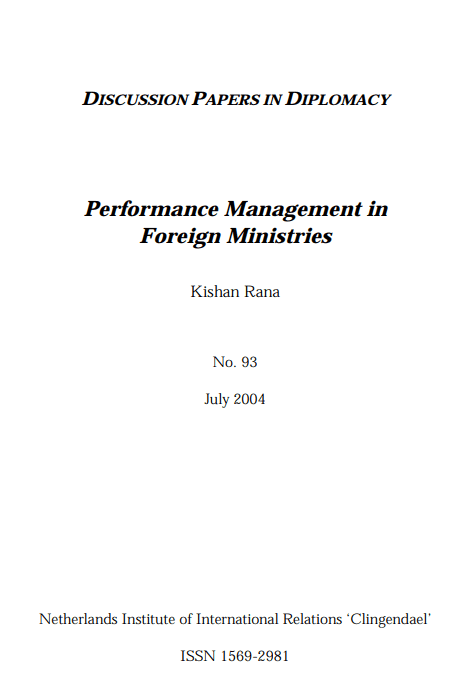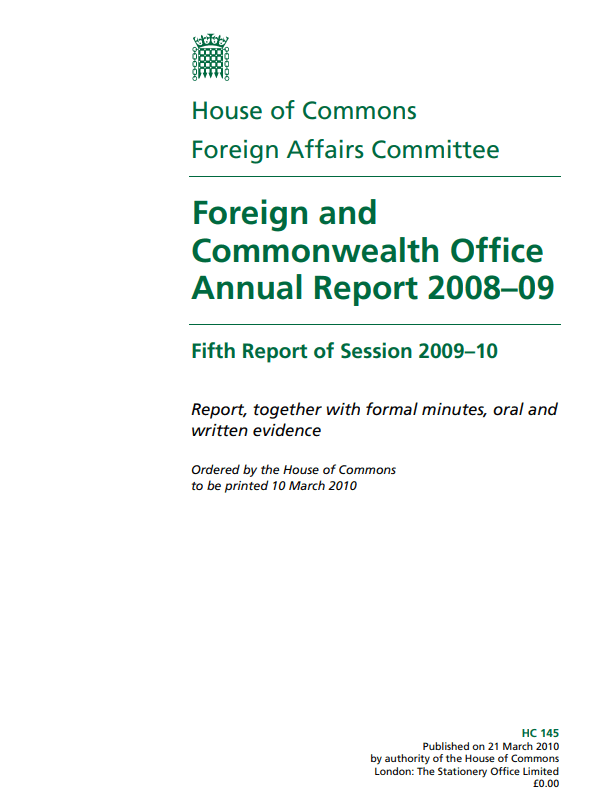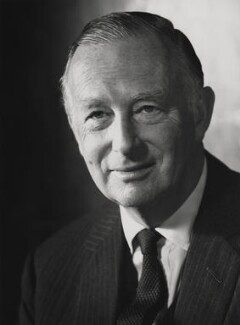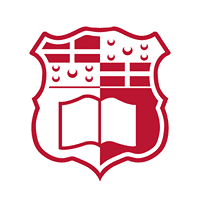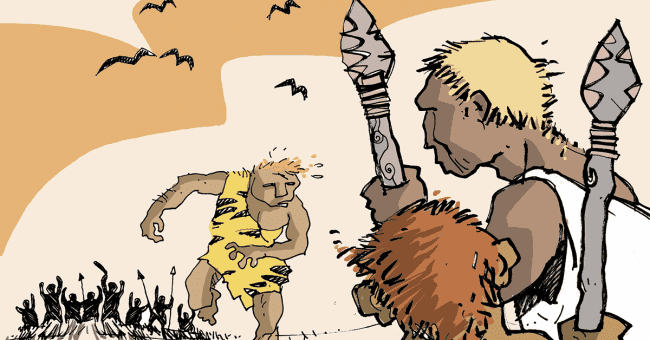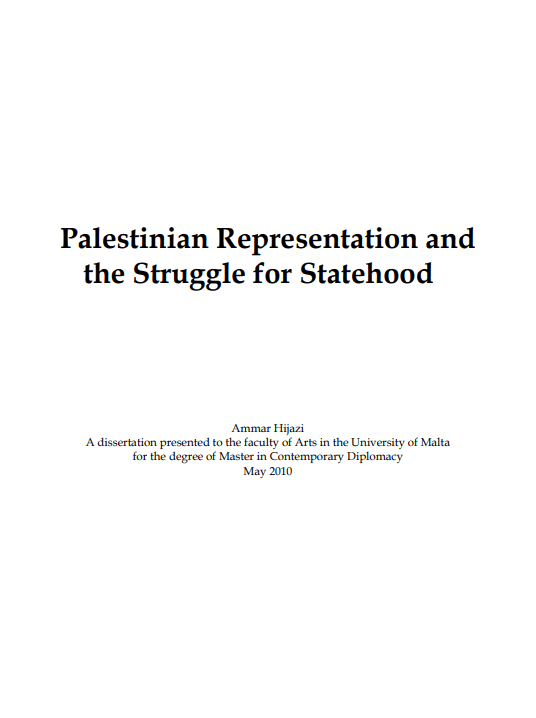Diplomats need to know a certain amount, but there should be no trace of erudition or pedantry in what they know, and their knowledge should agreeably surprise and perhaps impress those with whom they are speaking, but never embarrass, offend or shame them.
Ivo Andric, Nobel Prize Laureate for Literature (1961)
With the end of the cold war, the high level of certainty and predictability in international and national decision-making environments has been replaced with dynamic international relations and constant fluctuation. Multipolarity, combined with globalisation and increased radical national and religious movements, has made the international world very unstable. As a result, the “diplomatic kaleidoscope” has been changing very fast. Diplomats are often called upon to deal with situations for which they cannot prepare in advance, for which they cannot find instructions in diplomatic manuals.
Knowledge—a combination of information, training, experience and intuition—is what enables a diplomat to act appropriately in unpredictable situations. The knowledge used in diplomacy appears in a variety of forms, starting from the general knowledge gathered in the course of regular education, knowledge of particular subjects such as international relations and international law gathered through specialised diplomatic training, and ranging to knowledge gained through experience, such as knowledge of regions, tacit knowledge of how to react in particular situations, and knowledge of procedures.
A diplomat’s use and need of knowledge seems in many ways obvious, but proves difficult to explain and define. In this paper we aim to provide a comprehensive introduction to the topic of knowledge management in diplomacy. First we provide working definitions of knowledge and knowledge management, and examine the evolution of the concepts. Next, we consider specific features of diplomacy that affect and limit the way knowledge management can be implemented. Then we look at specific techniques which diplomacy can adapt from the business sector in the field of knowledge management. Finally, we consider some important questions related to human resources and knowledge management.
KNOWLEDGE MANAGEMENT—CONCEPT AND BASIC TERMINOLOGY
Every new discipline develops specific terminology both by introducing new terms and assigning new uses to existing terms. Early phases are usually characterised by terminological confusion, especially in fields which are multidisciplinary. Knowledge management is such a discipline, drawing from a variety of sources: management theory, economics, psychology, information technology, etc. While everybody recognises the importance of knowledge and knowledge management, few can define them even in vague terms.
What is knowledge?
Philosophers throughout history have addressed this question, arriving at a variety of answers. Our modest attempt will not claim philosophical pretensions, however, we will try to provide elements for a definition of knowledge as it is used in the framework of knowledge management.
First, we must define two relevant terms from the field of information technology: data and information.1For more about the use of the terms data and information in the field of knowledge management consult T. Davenport and L. Prusak, Working Knowledge (Boston: Harvard Business School Press, 1998), 2. Data is a record of a particular event. Information is data which has acquired additional meaning: a message beyond simple semantic meaning.2The term information was used by the founding fathers of information theory, Claude Shannon and Warren Weaver, as a technical term which does not carry any meaning. Technically speaking, it does not make a difference if a piece of information is loaded with meaning or if it contains pure nonsense.
An example from diplomatic practice may make this distinction more clear. We can consider the fact that “Ambassador A met Ambassador B” to be data. It is a fact—a diplomatic event. As salesmen sell things and waiters serve food to people, diplomats meet and discuss. If we add to this the statement that “Ambassador A and B met agreed to conclude a visa agreement” we have information. Information carries some additional meaning and message beyond the simple statement of fact presented in data.
If we interpret this information and consider it from various perspectives (e.g. Ambassador A’s country needs to improve relations with the other country; country B is under pressure from regional institutions to conclude this agreement, etc.) we are creating knowledge. Davenport and Prusak provide the most comprehensive definition of knowledge in the field of knowledge management: “Knowledge is a fluid mix of framed experience, values, contextual information, and expert insight that provides framework for evaluating and incorporating new experiences and information. It originates and is applied in the minds of knowers. In organzations, it often becomes embedded not only in documents or repositories but also in organizational routines, processes, practices, and norms.”3T. Davenport and L. Prusak, Working Knowledge (Boston: Harvard Business School Press, 1998), 3. In diplomacy probably more than in business sector knowledge is both a basis and a product of the thinking process. In order to analyse we need knowledge and through analysis we produce knowledge.
What is knowledge management?
Knowledge management is not about the automation of the thinking process but about the use of technology to assist the normal thinking process.4Attempts to automate the thinking process typify artificial intelligence research from the 1960s and 70s. Researchers naively believed that with more computer power they would be able to simulate human thinking. The research raised high hopes and consequently proved highly disappointing when it could not deliver a machine to replace the human mind. The faulty element in this reasoning was not related to computing power, which has increased enormously, but the conceptual inconsistency based on the idea that the thinking process could be transformed into a set of computer algorithms. In the case of chess strategy such a transformation was possible due to the limited, although enormous, number of possible combinations. However, computers cannot simulate human consciousness. For more about the limitations of AI see: Hubert L. Dreyfus, What Computers Still Can’t Do: A Critique of Artificial Reason (Cambridge, Massachusetts: MIT Press, 1992). Peter Murray and Andrew Myers from of the Cranfield School of Management define knowledge management as “the collection of processes that govern the creation, dissemination, and utilization of knowledge to fulfil organizational objectives.5” https://www.info-strategy.com
An important first element of knowledge management is the introduction of intelligent access to information. Information is increasingly available and the key question is becoming how to use it in order to gain value-added elements. For example, today you can find much information about international conventions including texts, information about signature and ratification, etc. The general availability of this information is a necessary but not sufficient condition for it to be fully utilized. The data that a convention was signed by Malta is useful and may serve a specific, limited purpose. But often one needs to approach information in a broader context. For example, one may need to know all conventions ratified by Malta but not by member states of the European Union. Such information can provide useful input for further diplomatic and political activities. New techniques such as data-mining allow this type of advanced access to information.
A second element of knowledge management is automation of procedures through the use of workflow. Workflow can be defined as the series of tasks or steps used by an organization in order to produce a final result. The increased capacities of IT have provided an opportunity to shift some business and administrative processes from traditional methods to IT-based procedures. Workflow is usually based on following the movement of documents in the decision-making process. Besides improvements based on automation, workflow activities allow us to re-examine the question of organisation of activities. The introduction of automation usually provides an opportunity to discuss the question of preservation of institutional memory stored in working procedures and activities. Although workflow is IT-based and IT-related, it may have some side-effects not directly linked to IT, such as demonstrating the need for restructuring of diplomatic services.
Another aspect of knowledge management is the automation of routine activities. While it is not possible to replace human intelligence, it is possible to automate many activities if they can be logically described. A major division in cognitive science is between those who think that all human problems can be reduced to logical algorithms and thus simulated by machines and those who think that human intelligence is too complex to be reduced to a description of the way humans solve particular problems. However, both sides agree that it is possible to automate routine activities. In diplomatic services routine activities are those related to consular and administrative activities. For example, the process of issuing visas, passports and other documents can be automated to a large extent through IT.
A final element of knowledge management is the recognition and appreciation of knowledge as an institutional resource. Knowledge can be identified both as the knowledge employees bring with them to their work, and the knowledge generated through the activities of an institution. Diplomatic services have to recognise data, information and knowledge as their primary resources. Often these are rhetorically acknowledged as a primary resource of diplomatic services, but when it comes to day-to-day and organisational issues, this is not the case. Sometimes, paradoxically, a piece of furniture has a higher declared financial value than top expertise in internal organisation and accounting. Such a situation can lead to enormous institutional and political losses. Once data, information and knowledge are recognised as the key resources of diplomatic services, most knowledge management improvements will be obvious and they will come as common sense solutions.
Evolution of knowledge management
Although knowledge management has been recently “re-discovered” by the business community, the attempt to understand knowledge is as old as civilisation and has always been a central theme of philosophy. Epistemology and logic are the two key knowledge-related disciplines that developed in ancient philosophy. Epistemology discusses the nature, structure and origins of knowledge, while logic analyses the validity of reasoning.
Plato and Aristotle laid the foundations of epistemology. The fundaments were further developed after the reformation within the framework of rationalism. Cogito, ergo sum became the key slogan of the rationalist approach. The approach centred around knowledge, human thinking and a supposedly rational reflection on society. The line of inquiry into epistemology was continued through the work of Kant and Hegel, and towards modern times, by the German philosopher Edmund Husserl, founder of phenomenology, Martin Heidegger, Jean-Paul Sartre and others. Cognitive science developed through a combination of traditional epistemology with linguistics, computer science and neuroscience. The key focus of cognitive science is on the human mind and thinking processes, including knowledge as a result of these processes.6Neil A. Stillings, Cognitive Science: An Introduction (Cambridge, Massachusetts: Bradford, 1991).
As the power and potential of tools and techniques for information management grew, the idea of managing not only information but also knowledge emerged. Stronger computational power led towards an attempt to create artificial intelligence. Attempts to develop computer programmes to simulate human thinking processes failed in the 1970s, as a result of unrealistic expectations. The failure discouraged further research in the area. Only recently, with the increased popularity of the idea of knowledge management, have researchers begun developing IT to assist with some mental processes and activities. Now, although the concept of knowledge management was introduced as a pragmatic tool, it has become one of the hype business concepts, similar to re-engineering, outsourcing, etc.
Another area where knowledge management has been adopted is economic and management theory. Interest in knowledge as an economic factor has grown with the structural changes in modern economy characterised by the increasing importance of the service sector. However, traditional economics has had difficulties integrating knowledge into its models. Penrose, who developed the economic theory of the firm, describes the reluctance of economists in the following way: “Economists have, of course, always recognized the dominant role that increasing knowledge plays in economic processes but have, for the most part, found that the whole subject of knowledge too slippery to handle.”7E.T. Penrose, The Theory of the Growth of the Firm (Oxford: Basil Blackwell, 1959), 77. American economist Alfred Marshall highlighted the importance of knowledge as an economic factor.8A. Marshall, Principles of Economics (London: McMillan, 1965), 115. In modern economics, one of the key proponents of the importance of knowledge as an economic factor is Paul Romer of Stanford University, who demonstrated that ideas and knowledge are key factors in economic growth.9Interview with Paul Romer for Strategy & Business: https://www.strategy-business.com/thoughtleaders/97110/page1.html
The importance of knowledge has been examined in more detail in business and management circles. Paul Drucker is considered the founding father of knowledge management. He introduced the basic terms that are used in this field, such as “knowledge work”, “knowledge society”, etc. Drucker argues that we are moving from an economy based on traditional resources (land, natural resources, land and capital) towards a new economy based on knowledge as a key economic resource.10P. Drucker, Post-Capitalist Society (Oxford: Butterworth Heinemann, 1993) In the field of management, knowledge has acquired a central position in a variety of ways. Senge focuses on organisational learning; he sees learning as a key component of a company’s success. Learning should be built in to the company structure in order to facilitate permanent growth.11For more information, see P.M. Senge, The Fifth Discipline: The Age and Practice of the Learning Organization (London: Century Business, 1990). Prahalad and Hamel focus on the concept of “core competence”.12 C.K. Prahalad, and G. Hamel, “The Core Competence of the Corporation,” Harvard Business Review (May-June 1990): 79-91. Schein focuses on the need to develop an organisational culture; the need to develop shared views in companies through shared experience.13For more information, see E.H. Schein, Organizational Culture and Leadership (San Francisco: Jossey-Bass, 1985).
IMPORTANT ASPECTS OF THE USE OF KNOWLEDGE MANAGEMENT IN DIPLOMACY
Business sector and diplomacy—similarities and differences
Applying business logic to various areas of human life is a general tendency, usually aimed at increasing efficiency and reducing expenses—the mantras of the modern world. Government and academic sectors aim to increase their efficiency through borrowing techniques and methodologies from the business sector. Use of IT, downsizing, and re-engineering are some of the concepts that have been transferred from the business sector and with varying levels of success implemented in non-business areas.
Diplomatic services have been included in this process to some degree, but remain close to the end of the list of government sectors to embrace business logic. Diplomatic services were shielded by their special status, especially during the cold war. The priority of protection of national interests characterised by secrecy was a strong safeguard against discussion about efficiency and organisation of diplomatic services. In the last ten years the situation has changed dramatically. Diplomatic services have become more open to the public. This allowed the public to look behind the walls of diplomatic services and to discuss not only the question of foreign policy but also the process of conducting this policy.
Diplomacy, like many other professions, has been faced with the question of what is “value for money”. The most intensive debate has taken place in the UK, Canada, Australia and recently, in the United States. Various reform attempts inspired by experience and expertise from the business sector were introduced. Apart from their success, most of those reforms introduced the need for diplomatic services to be more business-like. The pendulum could even swing to the other extreme, making diplomatic services completely business-like.
For several reasons, however, there are limits to the application of expertise from the business sector in the diplomatic field.
First, there is a difference in function. While companies are established in order to generate profit, diplomatic services promote national interests in particular, and maintain international order in general.
Second, companies have a strong feedback loop in the form of market and profit. This makes them constantly strive to increase efficiency. Diplomatic services usually lack this feedback loop. Not only the fact that diplomatic services have exclusivity in official representation of the country, but also the specificity of diplomatic work, makes diplomacy difficult to effectively evaluate. Moreover, the complex environment in which diplomatic services operate renders any attempt to measure efficiency almost impossible.14Areas of diplomatic activities where efficiency can be measured are administrative and consular activities. Numbers of passports or visas issued are quantitative elements that could provide useful guidance for measuring efficiency.
Third, processes in the business sector are organised in order to achieve some quantifiable result at the end (profit). Processes in diplomacy are not simple instruments to an end, but have importance in themselves. Sometimes the diplomatic solution to a problem lies in the process. Currently, in international affairs we have three on-going processes (North Ireland, Dayton and Middle East) and at least one in the making (Kosovo Peace Process).
Fourth, time has a different meaning in business and in diplomacy. While in the business sector the guiding principle is to do more in less time, in diplomatic services the equation is more complex. Often it is necessary to have some delay between message and response. Sometimes the time factor is an important element of diplomatic signalling. Delays in response, the channels through which a response is sent, etc., are all part of diplomatic signalling.
These major differences between the business sector and diplomacy influence the application of knowledge management in diplomacy. In the business sector knowledge has instrumental value which is directly applied to particular circumstances (management campaigns, interaction with customers, etc.). In diplomacy, knowledge has a more general importance. It is the basis of organisation and is more often used indirectly, for reacting to new situations, than directly, to deal with expected situations.
Specific features of diplomacy that could influence knowledge management projects
The nature of diplomacy and diplomatic processes naturally influences the type and degree of IT related knowledge management projects appropriate for diplomatic services. Diplomacy is a “human-intensive” activity; it is conducted largely through personal communication and individual actions, evaluations and decisions. Therefore, diplomacy cannot easily be represented through structural logical representation. It evades codification and rigid formulations. Diplomacy is based on intensive human communication at various layers of interaction. Day-to-day conveying of information and exchanging of messages is the first and obvious level of communication, and this is already often performed through IT communication tools.
But communication has aspects other than the technical means of message conveyance. One of these aspects is intentionality: our ability to think about the perception another person has of us, or to go further, our ability to consider what other people think that we think about them, etc. Our social communication depends to a large extent on the level of intentionality that we can achieve: usually four to five levels.15For more information about intentionality see: Daniel C. Dennett, The Intentional Stance (Cambridge, Massachusetts: Bradford, 1989). In traditional diplomacy the ability to envisage the reaction of the other side is crucial.
The requirements of diplomacy for spontaneous human involvement is usually presented as one of the key arguments for the limited possibilities of the use of IT in diplomacy. Without arguing that IT based communication is better or worse than face-to-face communication, we can think of certain situations where it may be a benefit if the “noise” of normal human communication is replaced with dry electronic communication. Last year, negotiation exercises conducted via the Internet demonstrated that in certain situations the simple conveyance of messages without the trappings of body-language, tacit communication, intentionality, etc. can be very effective in the process of achieving diplomatic breakthroughs.
Application of knowledge and information to the decision making process
Diplomatic services operate through a constant process of decision making. Every day, a variety of decisions, from the routine to those which could determine the future of the country and decide questions of war or peace, are made. How can the wealth of information, preserved knowledge, and institutional memory accumulated by the diplomatic service be applied in the decision making process?
This is a key question, because practice in diplomatic services shows that often decisions are not a product of textbook style rational rules applied by rational decision-makers based on available facts, past decisions and expertise. On the contrary, decisions are often made through the specific interplay of rational elements, institutional memory, political influences, trade-offs on the international, national and institutional level, and last but not least, the influence of individuals.
The key for the success of knowledge management projects in diplomatic services will be the establishment of this link between recorded information and knowledge and the decision-making process.
The first step in making this link is to make information and knowledge readily available. The expertise is usually available in the services, but not accessible or acknowledged: often diplomatic services do not know what they know.
The second step is to make information and knowledge accessible not only in the technological sense (access to the computers, libraries), but also in the logical sense (possibility of pinpointing and selecting the most relevant information, i.e. data-mining).
The third, and likely most difficult, step is to base decisions on information and available knowledge. This is a very complex task, the success of which has serious limitations not only organizationally, but also in human nature. Knowledge management can make a difference by making information easily available to decision-makers. Ignoring knowledge and information is a decision in itself.
PRACTICAL TECHNIQUES OF KNOWLEDGE MANAGEMENT IN DIPLOMACY
Information management
One of the key arguments of the early “techno-optimists” was that diplomats would become obsolete because information would be easily accessible via the Internet. However, information gathering, one of diplomatic functions listed in the Vienna Convention, is not simply the collection of information, via the Internet or from any other source. Information gathering would be better referred to as information management: a broad process which starts with gathering data and ends by providing relevant information for decision-making processes.
The changing context of information management in diplomacy was nicely summarised by Newt Gingrich in a speech at Georgetown University: “Now (there)’s a level of proliferation of data, of information unlike anything that the human race has ever known. And in that context, to suggest that we’re going to have traditional ambassadors in traditional embassies reporting to a traditional desk at the State Department, funnelling information up through a traditional assistant secretary who will meet with a traditional secretary strikes me as unimaginable. And of course, in the real world, it no longer works that way.”16Speech by Newt Gingrich at Georgetown University, October 7, 1997, quoted in: Equipped for the Future: Managing U.S. Foreign Affairs in the 21st Century, (Washington, D.C.: Henry L. Stimson Center, 1998)
After data is gathered it must be transformed into relevant information, usually through one of the following three essential techniques: contextualisation, data-mining and condensing. These techniques are not new but they have taken on a completely new life with new technology.
1. The first technique of information management is contextualisation. The enormous amounts of data available on the Internet have to be put into the proper context in order to be useful. This is the process of transforming data into relevant information. For example, the data that two ambassadors met does not mean much if this data is not put into the proper context. Context building involves answering questions such as: Why did they meet? Was it a regular meeting? Did they agree about something? How often do they meet? What could be the consequence of this meeting?
Contextualisation requires special skills and knowledge which go beyond simple technological proficiency. Contextualisation has to be performed both on the spot (i.e. in the place and at the time of the event in questions) and in the ministry. Nothing can replace a diplomat on the spot who knows the complex social and cultural web and local circumstances that can help in interpreting particular data. After contextualisation on the local level is performed (in the particular country, mission or region) that information must be put into the broader context of the overall activities of the diplomatic service. A diplomat on the spot can provide proper local context but may not have the broader perspective of the overall diplomatic service. Therefore, contextualisation must also be applied on the level of the diplomatic service. For this activity, horizontal communication in diplomatic services needs to be enhanced, enabling easy access to data from various departments, missions abroad, etc.
What can knowledge management contribute in this respect? Organisationally speaking, certain techniques and methods can help overcome the limitations of hierarchical organisation and enhance horizontal exchange whenever it is necessary. While preserving positive elements of hierarchy for stability of the institution, dynamics should be provided through various forms of problem-centred structures. Problem-centred structures provide smooth shifts in the perspectives from which particular problems are addressed. Nowadays, in our inter-connected world, any diplomatic event can be approached from a number of perspectives. Essentially bilateral data can have multilateral consequences and a wide variety of cultural, political and economic aspects. Thus, in a proper analysis, data should be evaluated from as many angles as possible.
Technically speaking, certain IT tools can ease the process of contextualisation. Besides databases which provide access to structural information, hypertext is a key tool for access to unstructured information. Contextualisation usually involves the management of unstructured information. For example, through hypertext tools, context could be built by linking a paragraph of text about the meeting between two ambassadors to another paragraph with a report about their previous meetings or cultural activities between the two countries.
Sometimes a diplomat may want to add comments or annotations to a text. Hypertext allows the same information to be positioned in different contexts. Moreover, hypertext enables management of advanced interpretation features such as “reading between lines” or “small print”: meaning that cannot be detected at first glance. The “DiploWizard” system developed by DiploProjects at the Mediterranean Academy of Diplomatic Studies includes practical tools which could be considered a first step towards the creation of intelligent hypertext tools for the contextualisation of diplomatic information.
2. A second important technique in information management for diplomats is data-mining. Data-mining involves deriving useful information from vast amount of data using the processing power of computers. An example of data-mining techniques in diplomacy is the use of “voting patterns” in bilateral relations between the USA and other countries. The American diplomatic services gather and process voting data from the United Nations in order to learn about the voting patterns of particular countries which are of concern to the United States. The isolated data that a particular country voted for a proposed UN Security Council resolution gains new significance when it is seen as part of a series of similar data including the way that country voted in the past and the way various other countries voted. Thus, data-mining can derive very interesting information of possible use as the basis for further diplomatic activities out of otherwise unconnected data.
Although theoretically speaking it was possible to perform data-mining in the past (through manual searches of all records), data-mining is made easy with the increase of processing power and storage capacity of computers.
3. The third important technique for information management is condensation. We are currently inundated with enormous quantities of information. Thus, simply finding information is no longer the question, but now the key technique is to select relevant information, put it into context and present it in a concise form. Faced with proliferation of documents and materials, participants in international diplomatic life, both diplomatic services and international organisations, often find themselves concentrating on the means (documents) rather than on the real problems that should be addressed through those documents. The information glut is becoming unmanageable.
One organisational solution that could be introduced is to impose a limit that any problem or issue should be presented on a maximum of one or two pages. This solution could work in a paper-based world, but has a few serious limitations. First, reduction of complexity without reduction of meaning is one of the most demanding intellectual tasks. It requires a particular mixture of skills that may be difficult to find, such as logical thinking, ability to make abstract constructions, high literacy, etc. Moreover, even if one has those skills, reduction of a complex issue to a few pages may reduce the richness of information and deprive the user of one of the advantages that the Internet provides—access to vast amounts of information.
The solution is to change the paradigm, though the use of hypertext, which provides an excellent advantage—the presentation of information in layers. A paper-based version of the presentation of information in layers is already in use in business reports which present first an executive summary, and after that more detailed considerations of the particular problems. With the hypertext approach, one can start with the first layer containing an “executive summary”. The second layer would contain more detailed explanation. The next layer could contain academic perspectives on a particular problem. Following that, one could deal with the economic perspective, and so on. Even more importantly, the document itself could have annotated hypertext links to resources other than text. (Annotated hypertext links provide pointers to other documents with explanations of why those documents are relevant to the discussion.)
Parallel to the proliferation of information, one often hears nowadays that modern problems are too complex. This is not just an incidental observation by overwhelmed diplomats but a real development based on the fact that the modern world is becoming increasingly inter-connected. Many problems have perspectives and aspects that go far beyond traditional classifications of politics, economy, or society. How can diplomats deal with this? Often the first idea is to reduce complexity by simplifying things—an appealing solution, especially in politics. People like simple answers.
Unfortunately, the historical track record of providing simple answers to complex questions is not very favourable. Generally speaking, simplification carries the potential difficulty of undermining elements that look unimportant at the time but which may, with the intensive developments in modern society, become more important later on. Hypertext provides another solution: it allows us to present an simple and short story while at the same time preserving complex data-structures necessary for a complete understanding of an issue or problem.
Diplomatic processes and knowledge management
The functioning of diplomatic services can be explained in terms of processes. Any diplomatic service is involved in a variety of processes. Beside the type of processes which are themselves the object of diplomatic work (Northern Ireland Peace Process, Middle East Peace Process, etc.), numerous processes take place within diplomatic services. The key resource in these processes is information, which is contextualised through the process. But the value-added element that makes a process successful or not is the knowledge which is used to evaluate and make decisions. As already discussed, diplomatic processes are much broader than those in the business sector. In the business sector companies can customise processes to fit their stable and predictable interaction with an environment (selling, providing consultancy). In diplomacy, on the other hand, the operational environment both within a country and internationally fluctuates.
This fluctuation of environment limits the level of automation that can be applied and the type of knowledge management tools that can be used. A more detailed exploration of diplomatic processes shows that processes fit into three main groups:
1. Highly repetitive and routine processes are those which follow a clear sequence; each step is predictable. Most of these processes are related to consular activities such as issuing visas or passports. The steps involve filling out forms, asking other departments for recommendations, checking criminal records, issuing visas or passports, etc. These procedures could easily be translated into computer algorithms and facilitated through specially developed computer applications with limited need for human intervention.
2. The majority of diplomatic activities fall into the category of semi-repetitive tasks. Globalisation has intensified the process of development of international regimes in the field of environment, trade, human rights, etc. Based on international conventions, these regimes consist of machinery that organises regular meetings, processes documents, provides opinions, controls implementation of conventions, etc. These activities are carried out through more-or-less regular processes. Reports are prepared for specific periods of time; meetings of various committees are organised repeatedly in a more or less routine manner.
The form is repetitive, while the content fluctuates, depending on developments in the field. Some areas such as trade-regimes in the field of WTO have recently been more dynamic than others. Also in bilateral relations, activities are increasingly following certain patterns. Bilateral cooperation regimes established by bilateral conventions, for example, consist of regular meetings of mixed committees. Moreover, technical conventions in the field of double taxation, air-service transport, and investment are also established according to clear patterns. The repetitive aspects of these activities are ideal for automation. In addition, advanced knowledge management techniques can be designed to retain expertise developed in the framework of these activities, especially in the areas of high technical expertise (environment, trade, etc.).
3. The last group of activities associated with diplomacy are non-repetitive activities. These are the cream of diplomatic activities, consisting mainly of negotiation both on multilateral and bilateral levels aimed at solving international crises or bilateral problems, establishing new bilateral and multilateral regimes, etc. These processes require a lot of information and knowledge which cannot be codified into consistent logical structures. Advanced knowledge management tools can play a key role in non-repetitive activities, assisting in creative decision making, and even more importantly, in capturing knowledge and expertise developed through the process of making creative decisions.
KNOWLEDGE MANAGEMENT AND HUMAN RESOURCES
Knowledge requires a specific type management. It cannot be managed in the same way as other resources, and it cannot be managed “separately from the people in whose heads it resides”17Knowledge Management, Encyclopaedia of the New Economy,” Wired 6.03 (March 1998): supplement. The key for the success of knowledge management projects is their acceptance by the people who use them. More than in any other area of the use of technology, the rule that “humans make or break” applies to knowledge management. Following are some important aspects of knowledge management relating to human resources.
Creating a knowledge culture
One of the biggest challenges of knowledge management is the creation of a knowledge culture. People often fear and resist change. Without the appropriate culture among users, tools will not be effective regardless of their potential.
An initial problem with the introduction of IT is the fear people have of computer technology. At first people thought that computers could replace humans in the workplace. As each new level of technology is introduced people move from the initial fear and gradually come to accept, use and trust new systems. While computers have certainly not replaced people, they have changed work patterns greatly.
Knowledge is a source of power. Thus, it is often difficult to persuade people to share their knowledge to the benefit of others, whether it is in the business sector, international organisations, or ministries of foreign affairs. Many knowledge management tools are designed to store and make available the knowledge acquired by individuals through years of experience. Unless individuals are willing to share their knowledge these tools cannot be effective.
Training and transferring knowledge—a continuous process
Knowledge management offers great potential in the areas of knowledge transfer and training. It is important to keep in mind that diplomacy both uses and produces knowledge. Diplomats use knowledge in order to perform their function; simultaneously they produce new knowledge. In this sense, diplomacy is “knowledge perpetum mobile”.
Diplomatic training should be positioned within this circle. Training facilities should be built into diplomatic services and activities. This would allow, on the one hand, the transfer of continually generated knowledge and experience into training. On the other hand, knowledge provided through on-demand training should be easily integrated into diplomatic processes. Academic training institutions for diplomatic studies will have a more complex task in this respect.
Establishing the function of Diplomatic Knowledge and Information Officer (DKIO)
This position which has proved effective in the business sector could be introduced into diplomatic services. The DKIO should focus and coordinate knowledge management activities. The ideal DKIO would be a diplomat with a broad general culture, a talent for managing human resources, high technological awareness, and eagerness to challenge traditional views. The position of DKIO should be high in the traditional organisation of diplomatic services, and this should be reflected in all aspects of personal status (salary, promotions, postings, etc.).
Retirement and knowledge management
The departure of a leading expert in a particular field without codification of his or her expertise could mean a major financial loss (you may have to pay for expensive consultancy). The traditional approach, for example, often leads to a paradoxical situation whereby many ministries deprive themselves of expertise with a diplomat’s retirement. In many cases diplomats do not accept retirement with great enthusiasm since diplomacy is a very specific job which involves a lot of personal commitment. Once out of that circle many diplomats feel lost.
Therefore, knowledge management offers a potential “win-win” formula. On the one hand ministries of foreign affairs can preserve a valuable resource—the information and knowledge possessed by diplomats. On the other hand, retired diplomats can remain somewhat connected to diplomatic professional circles. Of course we cannot keep people forever in the service, but one can think about making a smooth transition towards retirement with some scheme that would enable utilisation of this resource even after retirement, for mutual benefit. Our DiploWizard system should facilitate one of those schemes through Knowledge Management Centre. The centre links junior diplomats and others in need of knowledge with retired diplomats: those who have knowledge, and more importantly, those who have the time and readiness to share their knowledge.
Integrated human resource management
The traditional perception of the hierarchical organization of a diplomatic service, consisting of headquarters and missions, should be gradually transformed towards a perception of a diplomatic service as an integrated system. The role of any participant in such a system, in the missions or at headquarters, should be decided by his/her potential contribution to a particular activity of the service rather than his/her hierarchical position.
Personal promotions in diplomatic services are governed by a variety of elements (need for service, personal and family preferences, emergencies, coincidences, etc.). This often leads to situations where, for example, you may find an expert on some multilateral issue working in a bilateral diplomatic mission. An expert on copyright, law of the sea, trade issues, etc. may end up, due to various reasons, in an embassy dealing exclusively with bilateral issues. Confining that person to deal exclusively with bilateral issues would be a loss both for the service (expertise) and for that person (personal, academic and professional interests).
While technology (Internet, communication tools, etc.) now provides the facilities to integrate diplomatic services, organizational changes are necessary to enable integration. One possibility is “diplomatic time-sharing”: a diplomat will have time allocated for various activities, regardless of physical location. For example, a specialist on the law of the sea sent to a bilateral mission may dedicate 20% of his/her time to consultancy on law of the sea.
CONCLUSIONS
The emergence of the concept of knowledge management in the business sector re-opens the old question of the role of knowledge in diplomacy. Diplomats have been reflecting on their working methodologies and the importance of knowledge since the early days of diplomacy.
The key condition for the successful implementation of knowledge management in diplomacy is the acceptance of the new techniques by diplomats themselves. In the end, knowledge management is intended to capture the knowledge and expertise which is carried by diplomats themselves. Thus any unwelcome or artificial imposition of knowledge management is a recipe for failure. The introduction of knowledge management must be carefully planned and implemented, with continuous adaptation based on the responses of diplomats. In order to succeed, knowledge management projects must address the specific features of diplomatic professional culture in which the possession of knowledge and information is jealously guarded.
Most diplomatic services, like other institutions, are not aware of the knowledge and information they possess. The first step in introducing knowledge management should therefore be to activate this knowledge. Although this task is primarily organizational, technology can help. This is an example of how technology can assist in addressing an issue that would previously been solved by traditional methods.
While knowledge management should be needs driven rather than technology driven, it is still important to follow developments in the technological field. These developments can stimulate new ideas and provide tools for solutions to traditional problems. Most of these tools will be adapted from the business sector, with full awareness of the above mentioned differences between diplomacy and business.
Knowledge management in diplomatic services should welcome involvement and input from the academic field. Academics address the question of knowledge from a different perspective which may have limited applicability for diplomatic activities. However, a merger of the two perspectives and approaches to knowledge—that of practitioners and that of academics—can stimulate new ideas and directions for growth.
Knowledge management will require a gradual but profound restructuring of diplomatic services and the way diplomatic activities are performed. Any grand design in this respect is doomed to failure. The process itself will determine the shape and characteristics of new knowledge-based structures for diplomatic services.



